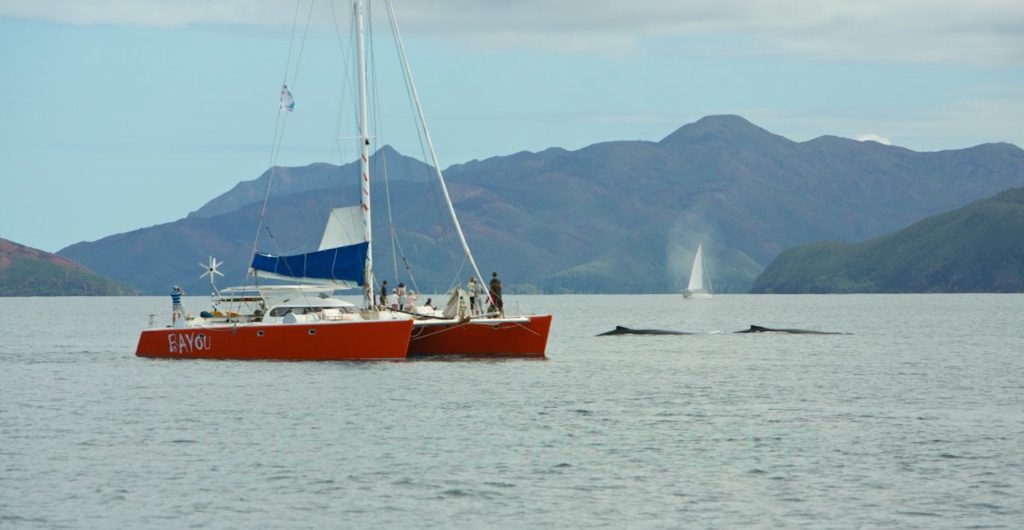The charter for whale-watchers’ good practices: a guarantee of quality and assurance of the skipper’s involvement for an eco friendly approach
From the end of June until mid-September, the majestic humpback whales (Megaptera novaeangliae) come to breed and calve in the Caledonian lagoons. The southern lagoon of New Caledonia from the surrounding area of Noumea to Ile Ouen are perfect spots for whale-watching as humpback whales come to breed in these calm and tropical areas after long migrations between Antarctica, where they spend the summer feeding.
In 2015, no less than 6289 passengers have been privileged to see these mammals during 447 whale-watching trips. “The good news is that the behavior of boaters improved significantly in 2015,” enthuses Patrice Plichon, head of the South Office Nature guards who took only two verbal trial for misconduct on the whole season.
Faced with an increase in maritime traffic, the Southern Province is involved to regulate whale watching, which is according to them “a great tourist tool.” Each year, whale watching providers gathered to take stock of the past season and the coming one and the good practices’ charter which has been signed by the group of marine professionals “Caledonia charter”. Boats that have adopted the charter can be recognized by a specific flag.
2016 declared Year of the Whale of the Pacific Regional Environment Programme
The South Pacific Regional Environment Programme (SPREP) decided that 2016 would be the year of the whale. So many events are offered throughout the season. The program includes workshops, exhibition at the Tjibaou Centre and an educational project around cetaceans school of Ile Ouen.



